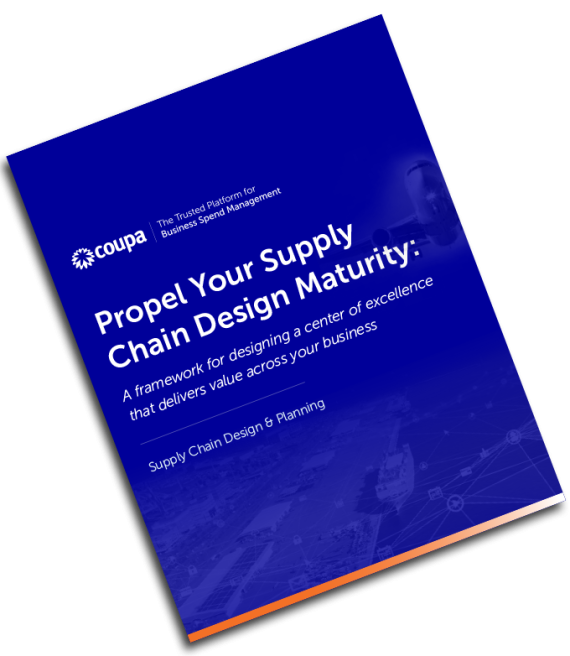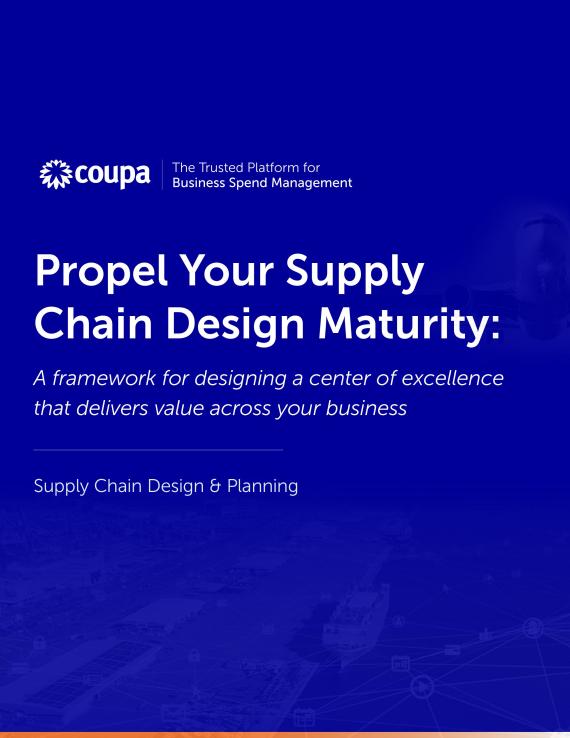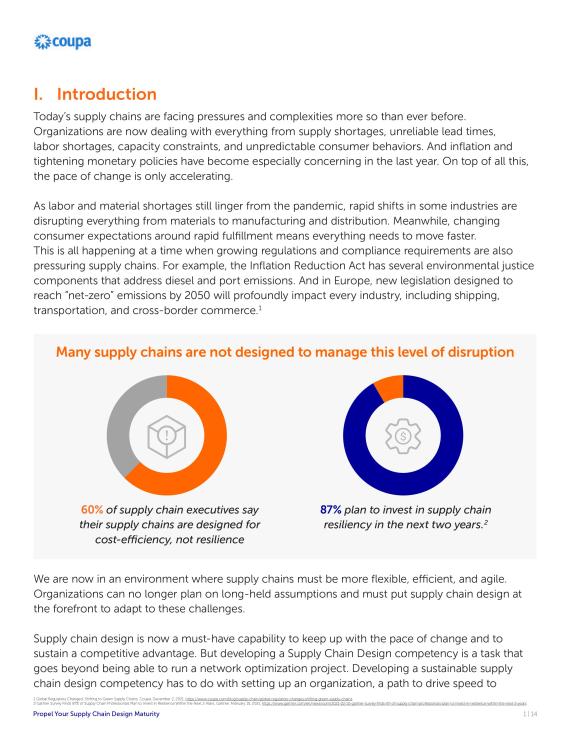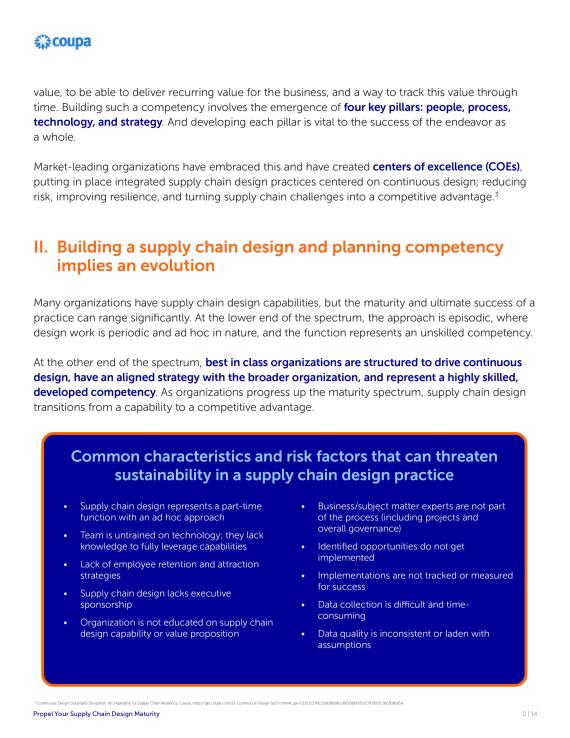Propel Your Supply Chain Design Maturity
A framework for developing a center of excellence that delivers value across your business
Learn what you need to develop a mature supply chain design organization that can drive value across the entire business.
The right people, processes, technology, and strategy make all the difference.
Set your supply chain organization up for success
More and more companies recognize they need a flexible and resilient supply chain to keep pace in today’s environment of fast changes and uncertainty. In this context, supply chain design is now a must-have capability. But many struggle with setting up a supply chain design competency that can grow with their business, navigate disruption, and deliver recurring value to the business.
Market-leading organizations have learned the value of developing a supply chain design center of excellence (COE) that centers on continuous design, reduces risk, improves resilience, and turns supply chain challenges into a competitive advantage.
The 2023 Supply Chain Design Maturity E-book
This in-depth e-book details the elements organizations should focus on to help their supply chain design COE fulfill its full potential and become the powerhouse of their business.
If you have started to build out your supply chain design COE but keep hitting roadblocks in your growth and maturity, this is for you.
Download now to discover:
- Risk factors that threaten an organization’s success
- 8 drivers of supply chain design maturity
- Factors to consider when structuring your supply chain design COE
- What successful supply chain design COEs have in common
FAQ
This is all happening at a time when growing regulations and compliance requirements are also pressuring supply chains. For example, the Inflation Reduction Act has several environmental justice components that address diesel and port emissions. And in Europe, new legislation designed to reach “net-zero” emissions by 2050 will profoundly impact every industry, including shipping, transportation, and cross-border commerce.
60% of supply chain executives say
their supply chains are designed for
cost-efficiency, not resilience
87% plan to invest in supply chain
resiliency in the next two years.
We are now in an environment where supply chains must be more flexible, efficient, and agile. Organizations can no longer plan on long-held assumptions and must put supply chain design at the forefront to adapt to these challenges.
Supply chain design is now a must-have capability to keep up with the pace of change and to sustain a competitive advantage. But developing a Supply Chain Design competency is a task that goes beyond being able to run a network optimization project. Developing a sustainable supply chain design competency has to do with setting up an organization, a path to drive speed to value, to be able to deliver recurring value for the business, and a way to track this value through time. Building such a competency involves the emergence of four key pillars: people, process, technology, and strategy. And developing each pillar is vital to the success of the endeavor as
a whole.
Market-leading organizations have embraced this and have created centers of excellence (COEs), putting in place integrated supply chain design practices centered on continuous design; reducing risk, improving resilience, and turning supply chain challenges into a competitive advantage.
of the process (including projects and overall governance), and if identified opportunities to improve supply chains do not get implemented. A seventh potential area of risk exists when the implementation of supply chain improvements are not tracked or measured for success. Finally, if data collection is difficult and time-consuming, or if the supply chain data quality is inconsistent or laden with assumptions, supply chain disruptions will become a greater threat to your organization.
• Engages with colleagues and subject matter experts across organization to determine challenges and incorporate input to drive outcomes
• Broader participation and democratized decision support
Please download the eBook for more details.



